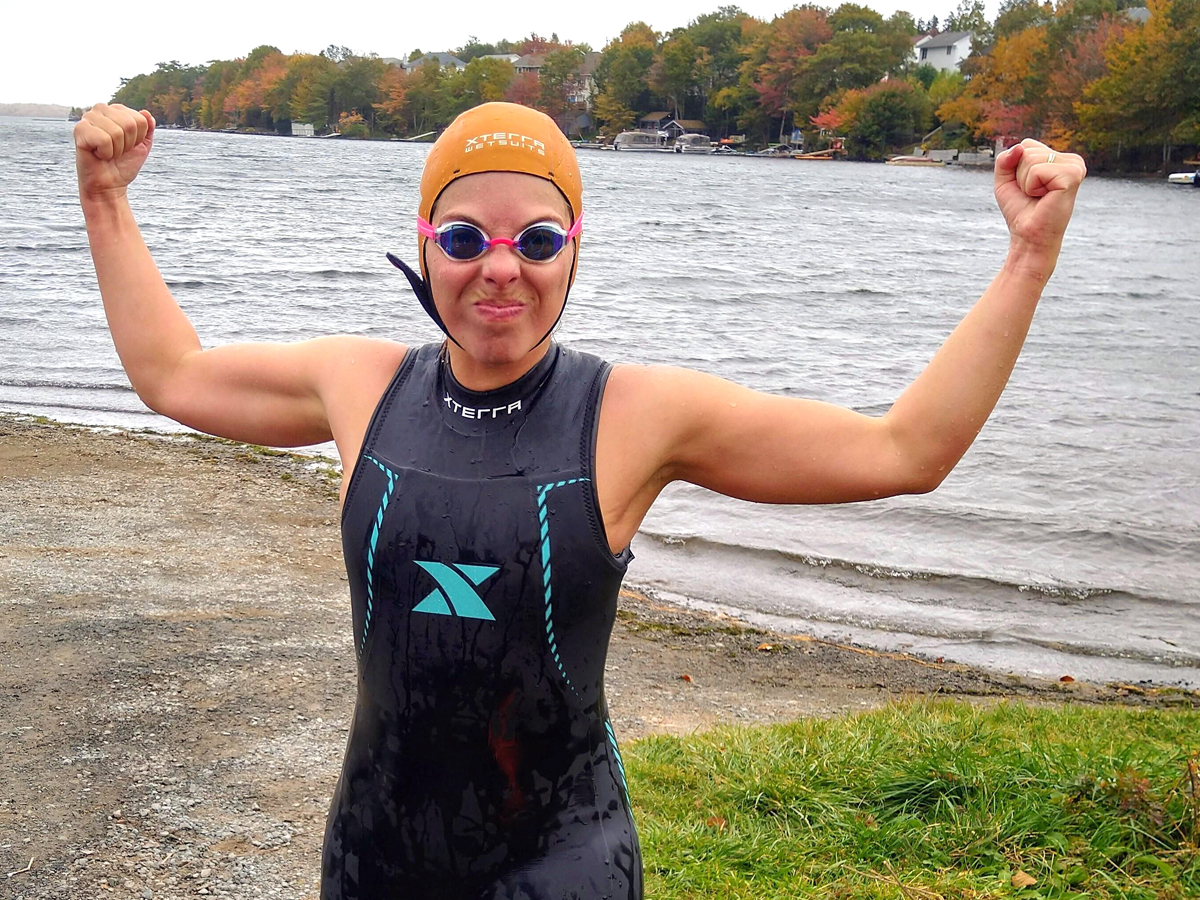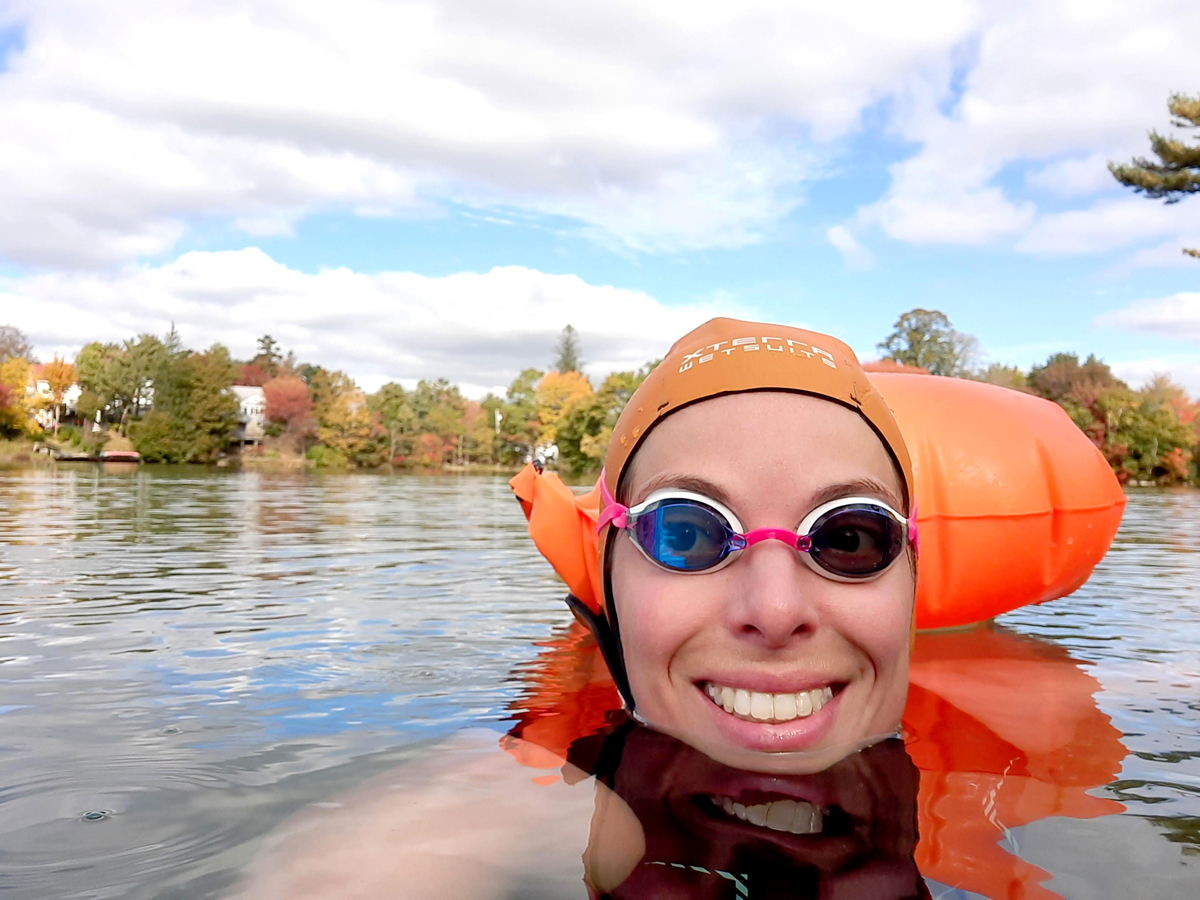The big chill – sailor credits cold-water swimming for help with injury recovery
By Lookout Production on Jun 03, 2022 with Comments 0

Sailor First Class Marie-Neige Dupuis-Carbonneau, a member of the Stadacona Band, has been recovering both physically and mentally after being struck by a vehicle while on her bicycle last year.
Joanie Veitch
Trident Staff
—
Last June, Sailor First Class Marie-Neige Dupuis-Carbonneau, a clarinetist with the Stadacona Band, was hit by a pick-up truck while riding her bike home from work. As captain of her unit’s Navy Bike Ride team, she would ride about 300 kilometres most weeks. The accident changed everything.
Just minutes away from her home in Halifax, S1 Dupuis-Carbonneau was cycling alongside Lake Banook when the construction truck struck her.
“He had no clue I was on his bumper,” she says.
She spent four days in a hospital. Among many injuries, she had torn ligaments and damaged cartilage in her chest. Later, she learned she had a significant shoulder injury that may require surgery.
Before the accident, S1 Dupuis-Carbonneau was fit and active. She cycled to the band office at Windsor Park most days, often adding an extra 50 to 60 kilometres to her commute. A runner too, she’d qualified for Canadian Armed Forces nationals in both swimming and triathlon.
After the accident, S1 Dupuis-Carbonneau could barely move. Her parents slowly nursed her back and in mid-July, she was able to walk with crutches and an articulated leg brace. Knowing her love of the water, her father promised to take her to the beach.
“I couldn’t do much but it was enough just to be able to sit on the beach and be outside. That was the first time I had a sense that I was going to heal,” she said.
By the end of August, S1 Dupuis-Carbonneau was meeting up with some members of the Navy Tridents Triathlon Club during their training swims. She could feel she was beginning to build up her strength. When summer turned to fall and the lake got colder, she continued her outdoor training with an inflatable swim buoy for safety. As the temperatures dropped, she added extra gear – a wetsuit, a neoprene swim cap and surf gloves. Swimming wasn’t just making her feel stronger physically, the cold water was helping in other ways too.
“Swimming in cold water has helped me so much. It’s like mediation because it forces you to focus on your breathing while your body adapts to the water. All you can think about is regulating your breathing and being right there, in that moment,” she says.
In April, S1 Dupuis-Carbonneau got back on her bike for the first time since the accident. After cycling with her family on the Salt Marsh Trail in Cole Harbour, she knew she could get back to occasionally cycling her former 12-kilometre commute to work.
“I set small, short-term goals so I don’t get disappointed,” she says. “I would like to be able to run a slow 5-kilometre route by the end of the summer. I think I can do it, but I’ll have to take it gradually.”
In August, S1 Dupuis-Carbonneau and her family will be moving to Ottawa for her new posting with the Central Band.
Filed Under: Top Stories
About the Author:






